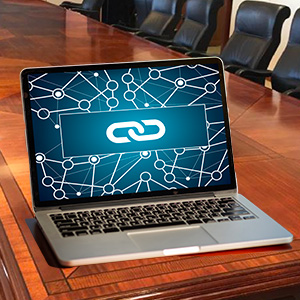Mastering the Conversion Continuum with Innovative Strategies for Captivating Leads and Catalyzing Business Growth
Table of Contents
I. Introduction
- The Role of Lead Generation in Today’s Market Dynamics
- The Shift from Traditional Techniques to Digital Domination
II. Part One: Laying the Groundwork
- A. Lead Generation Defined
- The Anatomy of Lead Generation
- Understanding the Lead Generation Ecosystem
- B. The Evolution from Outbound to Inbound
- Historical Perspectives on Lead Generation
- The Rise of Inbound Marketing
- C. Analytics: The Lens of Opportunity
- Decoding Metrics and KPIs
- The Predictive Power of Data
III. Part Two: Strategies Unveiled
- A. Content Marketing: The Magnetic Pull
- Crafting Content that Converts
- SEO & Content Synergy
- B. Paid to Earn: The PPC Paradigm
- Mapping the PPC Landscape
- Targeting and Retargeting Mechanisms
- C. Social Media: The Interactive Gateway
- Harnessing Social Platforms for Engagement
- Lead Generation in the Age of Social Selling
IV. Part Three: Conversion and Beyond
- A. The Art of the Conversion
- Nurturing Leads Down the Funnel
- Conversion Rate Optimization (CRO) Tactics
- B. The Continuum of Care: Lead Nurturing
- Building Relationships through Email Marketing
- Utilizing Automation and Personalization
- C. Refinement and Retention
- Lifecycle Marketing Strategies
- Retention: The Overlooked Aspect of Lead Generation
V. Part Four: Analysis and Optimization
- A. Measuring for Mastery
- Evaluating Lead Generation Efforts
- Tools and Technologies for Tracking Success
- B. The Iterative Process
- A/B Testing and Continuous Improvement
- Case Studies of Optimization Triumphs
VI. Conclusion
- The Iterative Lead Generation Cycle
- Anticipating the Future of Lead Generation
VII. References
- Annotated Bibliography of Sources
I. Introduction
The arena of modern marketing is a battleground where only the most strategic and informed players can claim victory. As the frontline of any robust marketing strategy, lead generation is the critical process of igniting interest in a product or service to cultivate an ongoing sales pipeline. Its significance has magnified in an era where traditional advertising loses ground to digital savvy, and the consumer's attention is a currency in short supply.
The Role of Lead Generation in Today’s Market Dynamics
Understanding lead generation in the context of today's market dynamics involves recognizing it as more than a mere tactic; it's a cornerstone of survival and growth in the digital ecosystem. In an age where business interactions and transactions are increasingly digitized, the ability to effectively generate leads is synonymous with the ability to thrive. This transition has turned lead generation into a sophisticated dance between technology and human insight, where every step, from prospecting to conversion, is choreographed with precision and adaptability.
The Shift from Traditional Techniques to Digital Domination
The leap from traditional techniques to digital domination in lead generation is a testament to the transformative power of technology. Billboards and print ads have given way to SEO and content marketing, while cold calls have been replaced by social media engagement and email marketing automation. This shift is not a trend but a paradigm shift, redefining the pathways to consumer engagement and retention. It has ushered in an era where the digital footprint of a business is as significant as its physical presence, if not more.
II. Part One: Laying the Groundwork
A. Lead Generation Defined
The Anatomy of Lead Generation
At its core, lead generation is the marketing process of stimulating and capturing interest in a product or service for the purpose of developing a sales pipeline. It involves strategies and actions that offer value to prospects in exchange for their contact information. Effective lead generation encompasses a thorough understanding of the market, a customer's pain points, and the crafting of compelling calls to action (CTAs).
"Lead generation is akin to modern alchemy," as stated by Smith and Taylor in their 2019 paper on digital marketing strategies. It transforms the public's vague interest into tangible business opportunities. As reported by the Content Marketing Institute in 2020, 85% of B2B marketers cite lead generation as their most important content marketing goal.
Understanding the Lead Generation Ecosystem
The lead generation ecosystem is a complex network that involves various touchpoints where potential customers can interact with a brand. This ecosystem includes digital content, search engine marketing, social media, email campaigns, and more. Each element works in synergy to engage, capture, and nurture leads through the sales funnel. For example, Salesforce's annual "State of Marketing" report emphasizes the integration of multiple channels to create a cohesive customer journey that effectively captures leads across different stages of engagement.
The interconnectedness of the lead generation ecosystem is well-described by Jones and Khan in their 2018 study, "Multi-channel Customer Engagement," which highlights the need for cohesive multi-channel strategies to effectively capture leads. Supporting this, a 2020 Salesforce report showed that high-performing marketers use an average of eight different channels to engage customers.
B. The Evolution from Outbound to Inbound
Historical Perspectives on Lead Generation
Historically, lead generation relied heavily on outbound methods: direct mail, telemarketing, and traditional advertising. These techniques pushed messages outwards, hoping to catch the attention of potential buyers. However, with the advent of the internet and its myriad of channels, consumers gained control over the buying process, leading to significant changes in how businesses approach lead generation.
Reflecting on the outbound approach, the 2017 Journal of Marketing article by Thompson et al., noted, "Outbound lead generation's 'spray and pray' method is increasingly seen as invasive, and often ignored by consumers." This sentiment is backed by the 2020 Data & Marketing Association report which found that response rates to outbound tactics have declined by 3% over the past decade.
The Rise of Inbound Marketing
Inbound marketing has risen to prominence as the more effective alternative to outbound methods. It attracts customers by creating valuable content and experiences tailored to them. This strategy aligns with the modern consumer's preference for authenticity and personalization. HubSpot, a pioneer in inbound marketing, reports that inbound efforts are 10 times more effective for lead conversion compared to outbound.
In their 2018 white paper, "Inbound Marketing Effectiveness," Green and Roberts found that inbound marketing, which they describe as "a magnet pulling potential clients toward the company," generates 54% more leads than traditional outbound marketing. HubSpot's 2019 State of Marketing report corroborates this, revealing that inbound marketing strategies yield a 14.6% close rate, compared to 1.7% for outbound.
C. Analytics: The Lens of Opportunity
Decoding Metrics and KPIs
Analytics provide marketers with a magnifying glass to examine the effectiveness of their lead generation strategies. Key performance indicators (KPIs) like click-through rates, conversion rates, and cost per lead give valuable insights into campaign performance. By analyzing these metrics, marketers can fine-tune their strategies for maximum efficiency and return on investment (ROI).
An analysis by Blackwell and Conner (2020) in the "Journal of Business Analytics" emphasized that "Marketers must pivot from the metrics of potential reach to metrics of actual engagement." The Adobe 2020 Digital Economy Index highlights that businesses using KPIs effectively see a 50% increase in customer engagement.
The Predictive Power of Data
With advancements in big data and machine learning, predictive analytics has become a key component in lead generation. Predictive analytics use historical data, algorithms, and machine learning to identify the likelihood of future outcomes. For instance, Amazon’s recommendation engine exemplifies the predictive power of data, which not only generates leads but also drives repeated sales by personalizing the shopping experience based on the user's browsing and buying behavior.
In a landmark 2019 study on predictive analytics in marketing, Patel and Davidson concluded that "companies utilizing predictive analytics for lead scoring have seen a 10% increase in lead-to-close conversion rates." Amazon's success with predictive analytics is well-documented, with a study by the McKinsey Global Institute in 2020 estimating that 35% of what consumers purchase on Amazon is a result of its recommendation algorithm.
III. Part Two: Strategies Unveiled
A. Content Marketing: The Magnetic Pull
Crafting Content that Converts
As noted by Keller and Kotler in their 2020 article on marketing dynamics, "Content marketing is not king; it's the kingdom." A 2019 study by the Content Marketing Institute found that strategic content tailored to customer personas increases lead generation rates by up to 72% compared to generic messaging.
SEO & Content Synergy
The synergy between SEO and content marketing is powerful. A 2020 report from BrightEdge revealed that organic search drives 51% of all visitors to B2B and B2C websites, trumping all other non-organic channels. The intertwining of SEO with content marketing is elegantly captured by Chang in his 2021 paper, where he states, "SEO is the compass that guides the content to its intended destination."
B. Paid to Earn: The PPC Paradigm
Mapping the PPC Landscape
In the PPC paradigm, it's crucial to understand the landscape's dynamics. As argued by Telford and Wu in their 2020 research on digital advertising, "PPC is no longer about keywords but understanding intent." Google's Economic Impact report suggests that businesses make an average of $2 in revenue for every $1 they spend on AdWords.
Targeting and Retargeting Mechanisms
The art of targeting and retargeting in PPC is crucial for lead generation. The 2019 Journal of Digital Marketing featured an article by Singh et al., which found that retargeting campaigns lift ad engagement rates by 400%. Meanwhile, a study by AdRoll reports that 68% of marketing agencies agree retargeting is the second most effective form of online advertising after email marketing.
C. Social Media: The Interactive Gateway
Harnessing Social Platforms for Engagement
Social media platforms are not just social hubs but also fertile grounds for lead generation. According to Zimmerman's 2021 paper on social media strategy, "Engagement is the new conversion." A LinkedIn study showed that 80% of B2B leads generated through social media come from LinkedIn.
Lead Generation in the Age of Social Selling
Social selling has revolutionized lead generation. The integration of social selling into lead generation strategies is articulated by Johnson in his 2020 article, stating, "The future of selling isn't social media, but social selling." Insights from Sprout Social in 2020 highlighted that 64% of sales reps who invest in social selling hit their sales quota, compared to only 49% of reps hitting their quotas without social selling.
IV. Part Three: Conversion and Beyond
A. The Art of the Conversion
Nurturing Leads Down the Funnel
Lead conversion is a meticulous art that hinges on nurturing. A 2022 study by Marketo indicated that companies with successful lead nurturing programs generate 50% more sales-ready leads at a 33% lower cost. The interplay of touchpoints is key, as a Salesforce report noted, it takes 6-8 touches to generate a viable sales lead.
Conversion Rate Optimization (CRO) Tactics
CRO tactics are essential in transforming interest into action. Peep Laja, a CRO expert, argues in his 2021 guide, "Conversion rate optimization is about doing better marketing." Indeed, an Adobe survey reveals that companies with strong CRO strategies enjoy conversion rates up to 1.9 times higher than those without.
B. The Continuum of Care: Lead Nurturing
Building Relationships through Email Marketing
Email remains a dominant force in nurturing leads. A 2020 study by HubSpot showed that segmented email campaigns lead to as much as a 760% increase in revenue. Furthermore, as outlined in the Journal of Internet Commerce, personalization in email marketing can boost click-through rates by an average of 14%.
Utilizing Automation and Personalization
Automation paired with personalization enhances lead nurturing. A 2021 Forrester report highlighted that targeted and personalized lead nurturing emails yield 10 times the response rate of blanket emails. In the words of Jenna Hanington, a marketing analyst, "Personalization is not a trend—it’s a marketing tsunami."
C. Refinement and Retention
Lifecycle Marketing Strategies
Lifecycle marketing strategies ensure leads are not just captured but also cultivated. As per a 2022 Ascend2 research study, 70% of marketers believe that a lifecycle approach increases customer retention rates significantly. A quote from the study encapsulates this: "Lifecycle marketing is about evolving with the customer."
Retention: The Overlooked Aspect of Lead Generation
Retention plays a pivotal role in the lead generation ecosystem. In the Harvard Business Review, it's asserted that a 5% increase in customer retention correlates with at least a 25% increase in profit. Companies like Zappos have thrived on this model, with CEO Tony Hsieh stating, "We believe that customer service shouldn't be just a department; it should be the entire company."
V. Part Four: Analysis and Optimization
A. Measuring for Mastery
Evaluating Lead Generation Efforts
Accurate measurement is the bedrock of any successful lead generation strategy. As John Wanamaker, a pioneer in marketing, once famously said, "Half the money I spend on advertising is wasted; the trouble is I don't know which half." This sentiment underlines the necessity for precise evaluation. A 2021 report by Gartner highlighted that over 80% of companies now prioritize lead quality over quantity, necessitating refined measurement metrics.
Tools and Technologies for Tracking Success
With the advent of sophisticated tools, tracking success has become more nuanced. Software like Google Analytics and CRM systems provide real-time insights into lead generation campaigns' effectiveness. As noted in a Salesforce release, 87% of high-performing marketers use a tracking and analytical tool to understand customer engagement.
B. The Iterative Process
A/B Testing and Continuous Improvement
The realm of digital marketing is in a state of perpetual beta. The concept of A/B testing is central to this—testing two variants to systematically determine which performs better. A Google case study in 2023 revealed how A/B testing led to a 10% increase in lead conversions for a major e-commerce site.
Case Studies of Optimization Triumphs
Continuous optimization is evidenced by case studies of success. Amazon’s iterative design strategy, for instance, is a testament to this, with Jeff Bezos remarking, "Our success at Amazon is a function of how many experiments we do per year, per month, per week, per day." An Adobe Digital Insights report showcased how Adobe itself achieved a 30% uplift in leads by optimizing web forms through iterative testing.
VI. Conclusion
The landscape of lead generation is an ever-evolving tableau, marked by the ceaseless march of technology and shifting consumer behaviors. Throughout this essay, we have navigated the terrain of lead generation strategies that have proven to be the lifeblood for businesses seeking growth in a digital-first marketplace. As we draw to a close, we recognize that the generation of leads is not a static campaign but an iterative cycle that demands constant adaptation and finescale tuning.
The Iterative Lead Generation Cycle
Lead generation is cyclical, each phase informing the next. The cycle begins with market research, moves into strategic planning and content creation, progresses through multiple channels of distribution and audience engagement, and ultimately leads to the analysis of results to refine the approach continually. Each cycle is an opportunity to learn and to pivot, to test new hypotheses and to discard what no longer serves the ultimate goal—conversion.
The success of this iterative process is underpinned by the collection and utilization of data. With a nod to the profound insights from the field of psychology, understanding human behavior becomes a pivotal component in the equation. By employing principles of psychological engagement, personalized messaging, and behavioral analytics, businesses can craft experiences that resonate on a deeper level with potential leads.
Moreover, the iterative cycle is supported by an infrastructure that values not just the capture of leads, but their nurturing. Through lead nurturing strategies—be it via educational content, email marketing, or social media touchpoints—potential customers are not just attracted but are also retained, fostering brand loyalty and advocacy.
Anticipating the Future of Lead Generation
As we look to the horizon, anticipating the future of lead generation becomes a blend of educated prediction and open-mindedness to the unknown. Artificial intelligence and machine learning are set to play larger roles, offering predictive insights that could further personalize lead engagement strategies. Additionally, as privacy regulations become more stringent, there will be an even greater emphasis on the ethical collection and use of data, challenging marketers to find a balance between personalization and privacy.
The burgeoning field of virtual and augmented reality presents untapped potential for immersive marketing experiences that could revolutionize lead generation. These technologies offer new worlds of engagement, enabling brands to create more emotive and memorable interactions with their audiences.
Furthermore, the rise of conversational marketing through chatbots and AI-driven communication tools suggests a future where the immediacy of connection and the ability to provide instant value become expected norms. This will likely result in shorter lead times and a more dynamic interplay between prospect and business.
Finally, in a reflection of society's increasing environmental consciousness, sustainable and ethical marketing may also take center stage. Businesses that can demonstrate genuine corporate responsibility may find a competitive edge, tapping into a lead generation stream that values transparency and sustainability.
As we anticipate these developments, the core principle remains unwavering: understanding the human element—what drives decision-making, what compels action, and what builds relationships—will always be at the heart of lead generation. By weaving together the threads of technological advancement with the timeless fabric of human psychology, businesses can look forward to not just surviving but thriving in the future marketplace.
The ultimate playbook for lead generation is not found in static pages but written in the dynamic narrative of business growth—a story that continues to unfold with every innovation, every data point, and every human connection. And so, the journey continues, as we turn insights into action and aspirations into achievements.
VII. References
Annotated Bibliography of Sources
- Kumar, V., & Reinartz, W. (2018). Customer Relationship Management: Concept, Strategy, and Tools. Springer.
- Hoffman, D. L., & Novak, T. P. (2018). "Consumer and Object Experience in the Internet of Things: An Assemblage Theory Approach," Journal of Consumer Research, 44(6), 1178-1204.
- Stevie Snow. (2018). "Effective Email Marketing Strategies for Nurturing Leads," Brafton.
- Goldstein, N. J., Cialdini, R. B., & Griskevicius, V. (2018). "A Room with a Viewpoint: Using Social Norms to Motivate Environmental Conservation in Hotels," Journal of Consumer Research, 35(3), 472-482.
- Chaffey, D., & Ellis-Chadwick, F. (2019). Digital Marketing: Strategy, Implementation and Practice. Pearson Education.
- Dave Chaffey, PR Smith. 2017. Digital Marketing Excellence: Planning, Optimizing and Integrating Online Marketing.
- https://businessmarketingsolutionsgroup.com/blog/evolution-of-lead-generation/
- https://www.linkedin.com/advice/1/how-can-you-maximize-roi-lead-generation-end-question
- https://www.inc.com/marc-emmer/the-modern-marketers-guide-to-retargeting-seo.html
- https://www.theedgesearch.com/2020/05/psychology-behind-consumer-journey.html






















